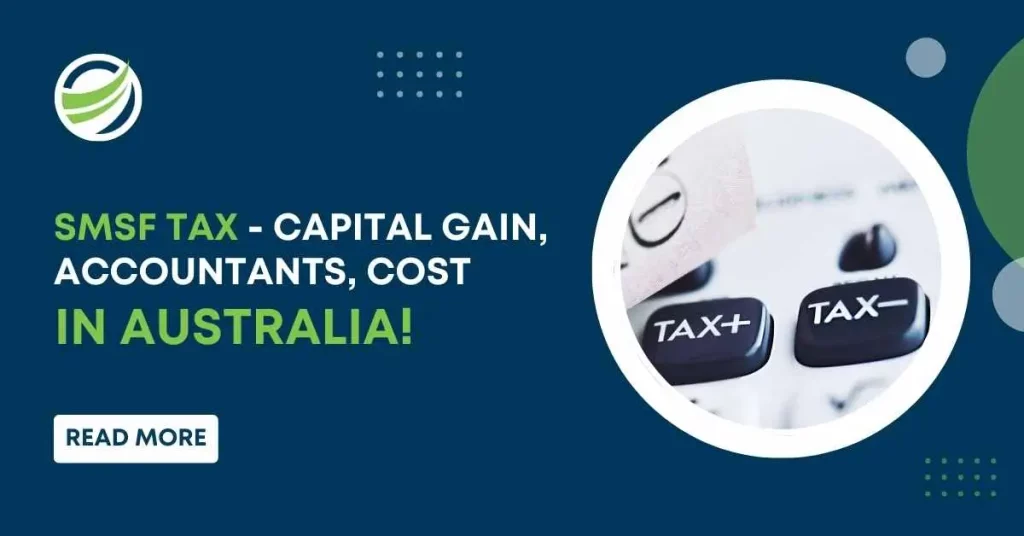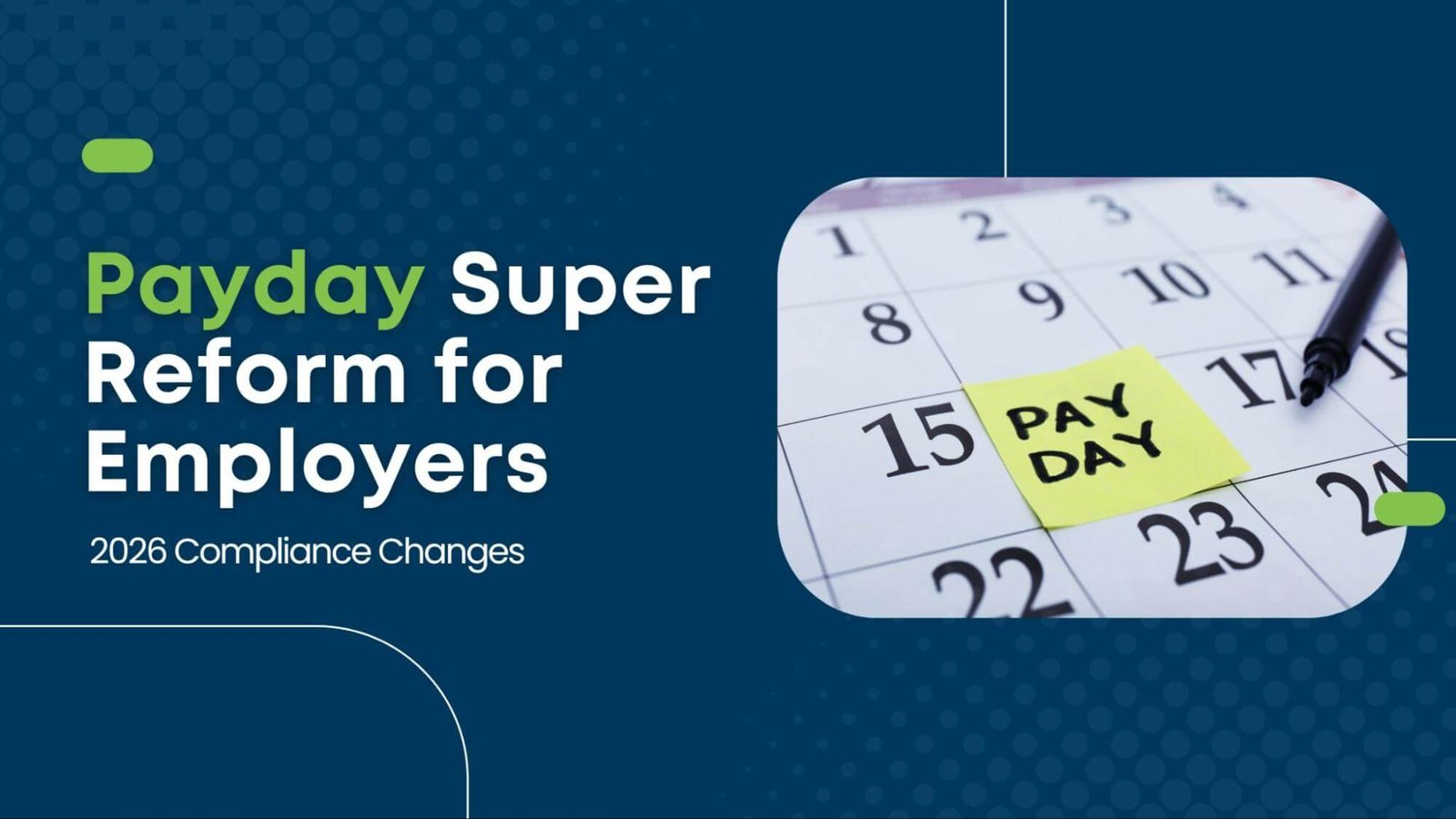
SMSF Capital Gains Tax Rate, Accountants, Cost in Australia
- Aesha Shah
- February 12, 2025
- 6 minutes
SMSF Capital Gains Tax: Rates & Discounts in Australia
Australian investors who desire control over their superannuation are increasingly choosing Self-Managed Super Funds (SMSFs). Effective tax planning, however, requires a grasp of SMSF capital gains tax (CGT), especially when handling investments like SMSF property.
The tax rates that apply to SMSFs, the applicable CGT discounts, and methods for lowering capital gains tax through superannuation contributions will all be covered in this blog.
What is SMSF Capital Gains Tax in Australia?
The tax imposed on the proceeds from the sale of assets held inside an SMSF is known as the SMSF capital gains tax. The capital gain, which is taxable, is the difference between the selling and purchase prices of assets sold by an SMSF, such as stocks, real estate, or other investments.
Understanding the intricacies of capital gains tax on superannuation is important for trustees to effectively manage their tax liabilities. For those unfamiliar with complex SMSF tax regulations, working with an outsourced SMSF consultant can help navigate compliance, tax optimisation, and reporting requirements effectively.
SMSF Tax Rates in Australia
The SMSF tax rates depend on whether the SMSF is in the accumulation phase or the pension phase.
- Accumulation Phase: In this phase, SMSFs are taxed at a rate of 15% on capital gains.
- Pension Phase: If the SMSF is paying retirement pensions, capital gains may be exempt from tax if the assets are supporting the pension. However, capital gains tax on superannuation still applies if the assets are in the accumulation phase.
SMSF Capital Gains Tax Discount in Australia
The SMSF capital gains tax discount is one of the main advantages for SMSFs. An SMSF is entitled to a 33.33% CGT deduction on the capital gain if it has held an asset for more than a year. Thus, only two-thirds of the capital gain is subject to taxes.
The capital gains tax obligation on SMSF property and other assets held within the fund may be greatly decreased by this discount.This discount can significantly reduce the tax liability on capital gains tax on SMSF property and other assets held within the fund.
For trustees looking to optimise their tax position, engaging an outsourced SMSF services provider can ensure strategic tax planning while remaining compliant with ATO regulations.

How to Reduce Capital Gains Tax with Superannuation Contributions
A valuable strategy for reducing capital gains tax with superannuation contributions is to ensure that your SMSF is maximising the concessional contributions. These contributions are tax-deductible and can help reduce the taxable income within the SMSF, which in turn reduces the capital gains tax liabilities.
Moreover, contributing to superannuation funds can also help your investments grow more efficiently by compounding returns within a lower tax environment. Seeking guidance from an outsourced tax consultant can provide tailored tax strategies to minimise capital gains tax within an SMSF.
Capital Gains Tax on SMSF Property
Capital gains tax on SMSF property is an important consideration for SMSF trustees who hold real estate as part of their investment strategy. When SMSFs sell property, the capital gain is taxed at the SMSF’s standard rate of 15% in the accumulation phase.
However, there are opportunities to reduce this tax through strategic planning and by taking advantage of the SMSF capital gains tax discount. Holding property for more than 12 months can provide the discount, which can lower the tax burden significantly.
Capital Gains Tax for SMSF Members Over 60
For SMSF members over the age of 60, the tax implications of selling assets change. Capital gains tax SMSF over 60 may be reduced in the pension phase, as capital gains on assets supporting a pension may be tax-free.
This is a significant advantage for SMSF members who are transitioning to retirement, as it allows them to preserve more of their gains. However, trustees should ensure that the fund is properly structured to take full advantage of these benefits.
Reporting SMSF Capital Gains Tax in Australia
It’s important to note that SMSF trustees are required to report capital gains in their SMSF annual tax return. Any capital gains realised within the SMSF are reported to the Australian Taxation Office (ATO), and taxes must be paid accordingly.
Trustees must also keep detailed records of all transactions, including purchase and sale dates, to calculate the capital gains tax correctly.
Strategies to Minimise SMSF Capital Gains Tax
There are several strategies that SMSF trustees can employ to minimise SMSF capital gains tax:
- Asset Allocation and Timing: Strategic asset allocation and the timing of sales can help minimise capital gains. Holding assets for more than 12 months allows SMSFs to take advantage of the SMSF capital gains tax discount.
- Contributions to Reduce Taxable Income: Making additional superannuation contributions can help reduce the taxable income of the SMSF, lowering the overall capital gains tax liability.
- SMSF Property Strategy: Consider investing in property within the SMSF for long-term capital appreciation while also taking advantage of tax concessions available on SMSF property.
Conclusion
Understanding SMSF capital gains tax is crucial for trustees who want to optimise their SMSF’s financial performance and minimise tax liabilities. By taking advantage of the SMSF capital gains tax discount, planning superannuation contributions, and leveraging strategic asset management, SMSF trustees can reduce their tax burden and boost their retirement savings.
Whether you’re looking at capital gains tax on SMSF property or broader investment strategies, planning ahead can make a significant difference in achieving your SMSF’s financial goals.
FAQs
1. What is SMSF capital gains tax?
SMSF capital gains tax is the tax applied on profits made from selling assets held within a Self-Managed Super Fund. The rate depends on whether the SMSF is in the accumulation or pension phase, with different tax treatments for capital gains.
2. How does the SMSF capital gains tax discount work?
The SMSF capital gains tax discount provides a 33.33% discount on capital gains if the asset is held for more than 12 months. This discount applies to SMSFs in the accumulation phase and can significantly reduce tax on long-term investments.
3. Can I reduce capital gains tax with superannuation contributions?
Yes, making additional superannuation contributions can help reduce your taxable income, which in turn can lower your capital gains tax liability. These contributions are tax-deductible and can improve the efficiency of your SMSF’s investment strategy.
4. Does SMSF capital gains tax apply to property?
Yes, capital gains tax on SMSF property applies when selling real estate held within the fund. However, SMSFs can benefit from the SMSF capital gains tax discount if the property is held for over 12 months, reducing the tax on any profits made from the sale.
5. How does capital gains tax on SMSF property differ for members over 60?
For SMSF members over 60, capital gains on property supporting a pension are generally tax-free, as long as the fund is in the pension phase. This can be a valuable advantage, allowing members to retain more of their capital gains for retirement.
6. What are the tax rates on SMSF capital gains?
SMSF tax rates on capital gains are 15% in the accumulation phase. However, if the SMSF is in the pension phase, capital gains may be tax-free. Trustees should structure the SMSF appropriately to take full advantage of these tax benefits during retirement.








